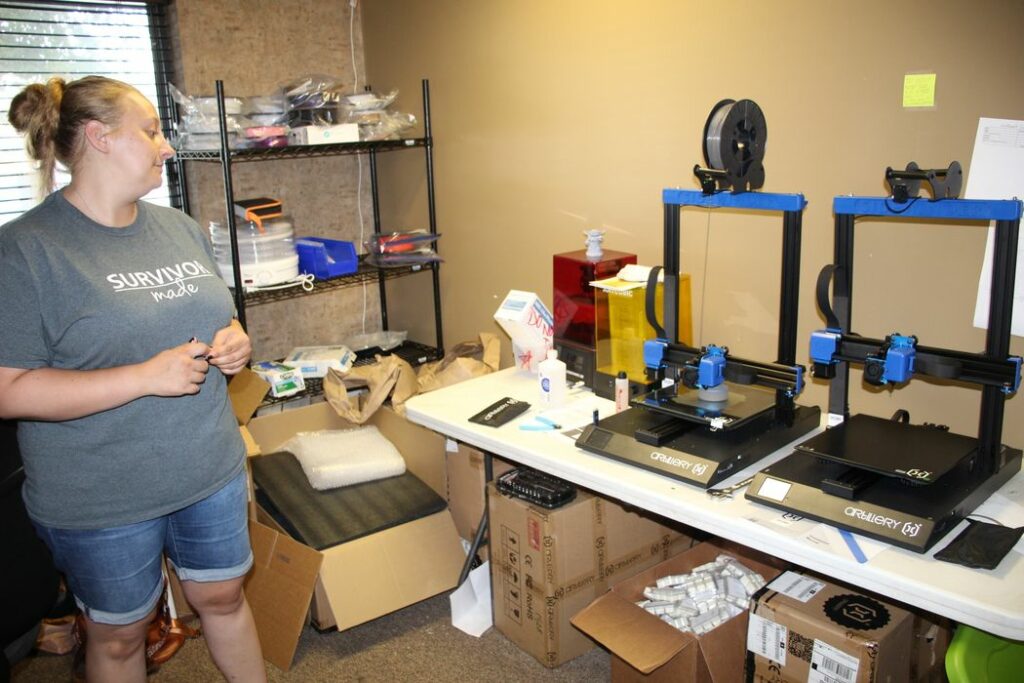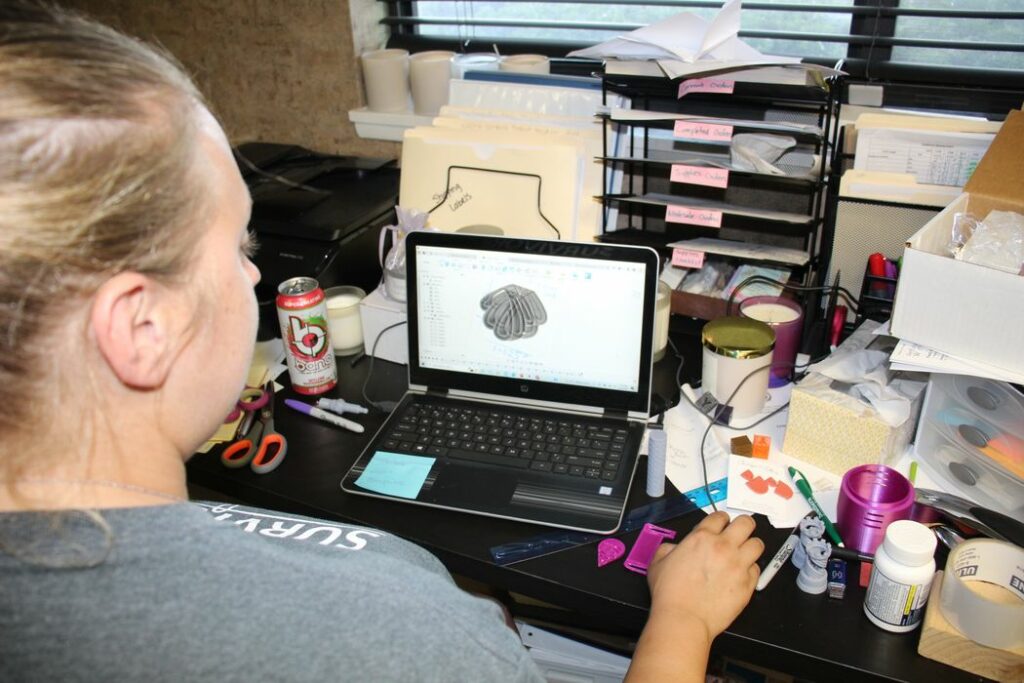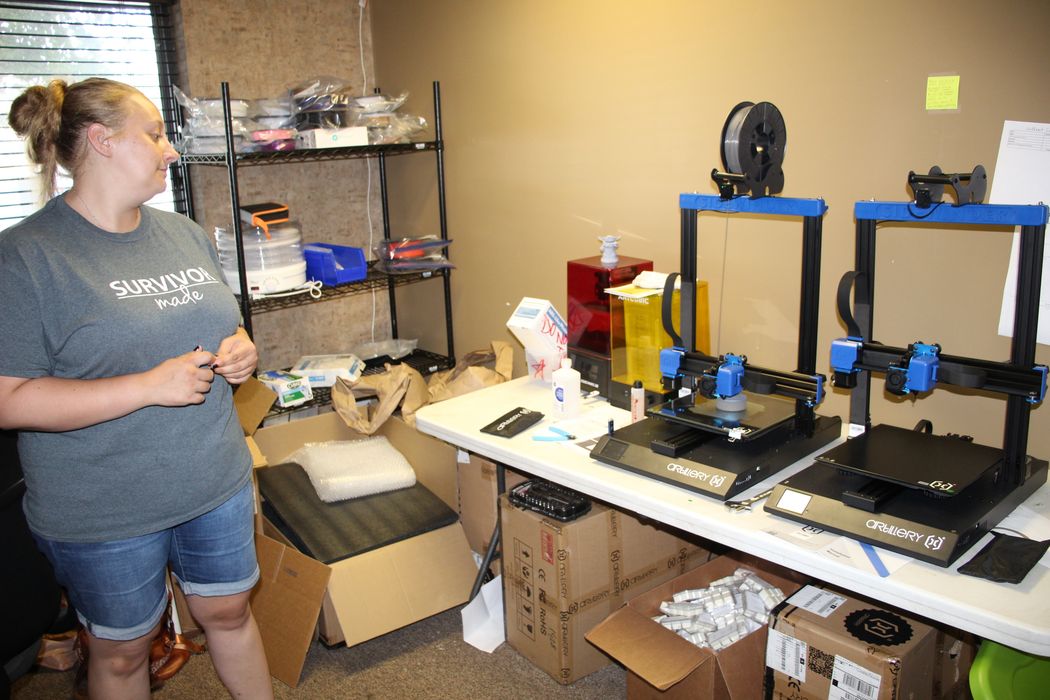
3D printing training program aims to help victims of human trafficking and sexual exploitation prepare for a career in additive manufacturing.
Content warning: mention of sexual violence and human trafficking.
If you or someone you know is affected by human trafficking or sexual exploitation, contact the U.S. Department of Health & Human Services’ National Human Trafficking Hotline at 1-888-373-7888 or text HELP to 233733 (BEFREE). The Canadian human trafficking hotline can be reached at 1-833-900-1010.
Like many engineers, Taiber Glotz always knew she had a mind that worked mechanically. But she lacked the confidence and access to training to make the most of those skills. As a survivor of sexual exploitation, Glotz was able to get a new start with the help of Refuge for Women, a faith-based, non-profit organization dedicated to helping women escape human trafficking. Now, Glotz is a graduate of a new program offered by Refuge for Women, which provides skills and training in additive manufacturing (AM).
Although much of the public remains unaware, according to Refuge for Women, sex trafficking in America is a $10 billion industry that impacts tens of thousands of women. Yet, few organizations exist to provide stable, long-term support for women who escape exploitation. Since 2009, Refuge for Women has provided safe housing and training for women leaving human trafficking and sexual exploitation, and they currently operate 11 homes across America. The program offers survivors access to 12 months of safe housing at no charge as they work through evidence-based, trauma-informed programming. The goal is to help women develop a vision for their future and leave equipped with the skills to pursue independent living.
With the help of a grant from the USDA Rural Development Program and Eric Wooldridge from Somerset Community College in rural Kentucky, Refuge for Women recently introduced a new option as part of their training program: a two-year program focused on providing training and expertise in additive manufacturing (AM). The goal is to support the manufacturing of Survivor Made products and to help survivors develop skills for a successful career in AM. Following completion of the program, the women can then enroll in an online college degree program to achieve a certificate in AM.
For Glotz, the program provided “new confidence that [she] can actually make things. It gave [her] positive reinforcement the whole way through.” Now, Glotz is poised for a career in AM, alongside training other women through the completion of the program.
A Grassroots Movement to Bring AM to Survivors

For the inaugural course, Heather Beebe led the training, developed by Somerset Community College, of students in both Autodesk Tinkercad and Autodesk Fusion 360. She is currently a project manager and instructor with USDA Elevate Kentucky for Additive Manufacturing. Her primary role was to assist with instruction, troubleshooting and equipment management. She guided students through the basics and beyond.
Beebe provided benchmark assignments every 1-2 weeks as part of the program. The first assignment was a simple phone holder that the women made in Tinkercad. Then, they progressed to Fusion 360 and projects ranging from six-sided dice to mugs.
“Once they got the basics of SDM (shape deposition manufacturing) and resin printing, we moved on to trying different materials. The women made a quality control cube to try out the different materials, like wood, polycarbonate, carbon fibre-reinforced PLA, PETG, high-temperature PLA, NinjaFlex and ELEGOO ABS-like resin,” explained Beebe. The women used a variety of equipment, including the Artillery Sidewinder X2 3D printer and the ELEGOO Mars 2 Pro3D printer. For slicing, the women were trained in PrusaSlicer and ChiTuBox, and for now, all sintering is done through a contractor in New Jersey.
At the end of the program, one student who showed exceptional promise was Glotz. She will now take over as the program instructor for incoming classes of women. Putting her skills to the test, Glotz has also been working on AM projects since graduating from the program, all with a focus on supporting the business side of Refuge for Women—Survivor Made. This side of the organization produces products include a range of candles and leather goods whose sale supports the mission of the program. To assist with the manufacturing process, Glotz made a candle cover to prevent dirt and debris from collecting in their finished products.
Read the rest at ENGINEERING.com

